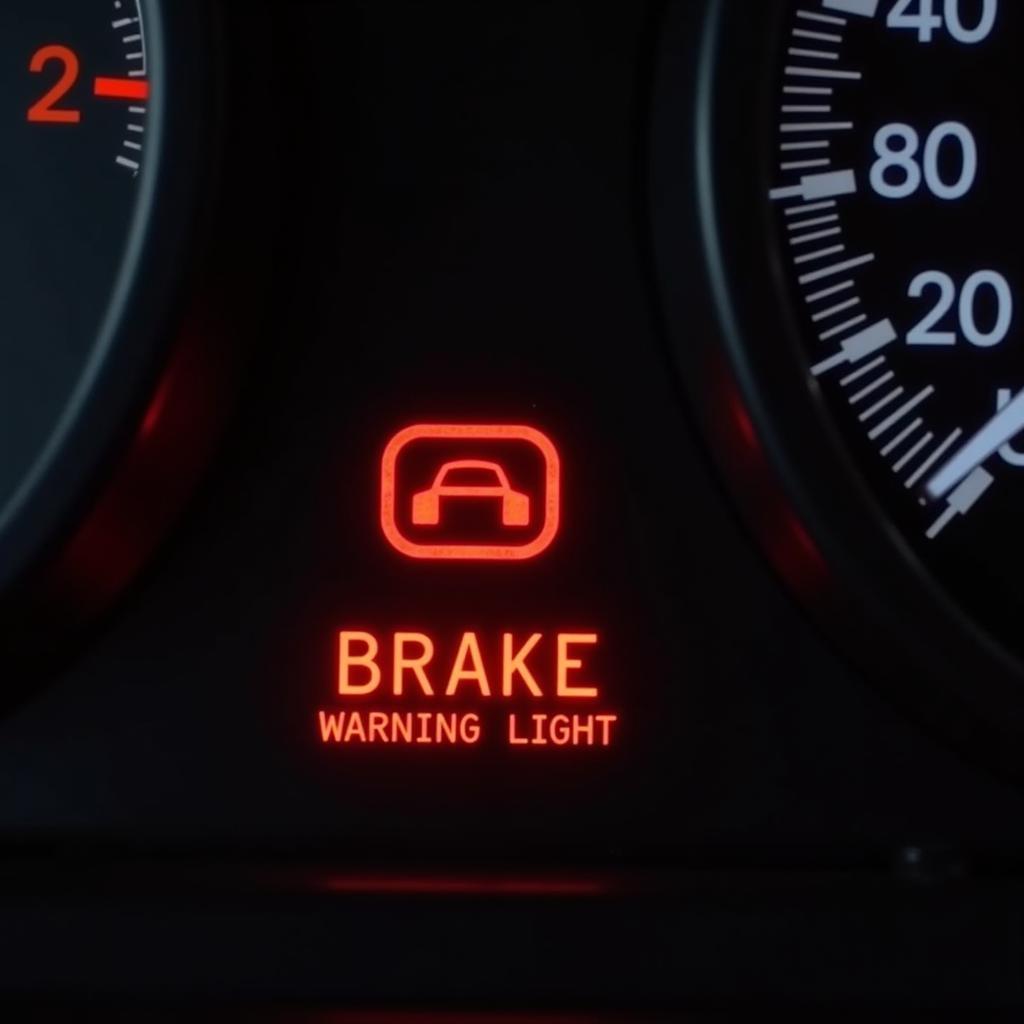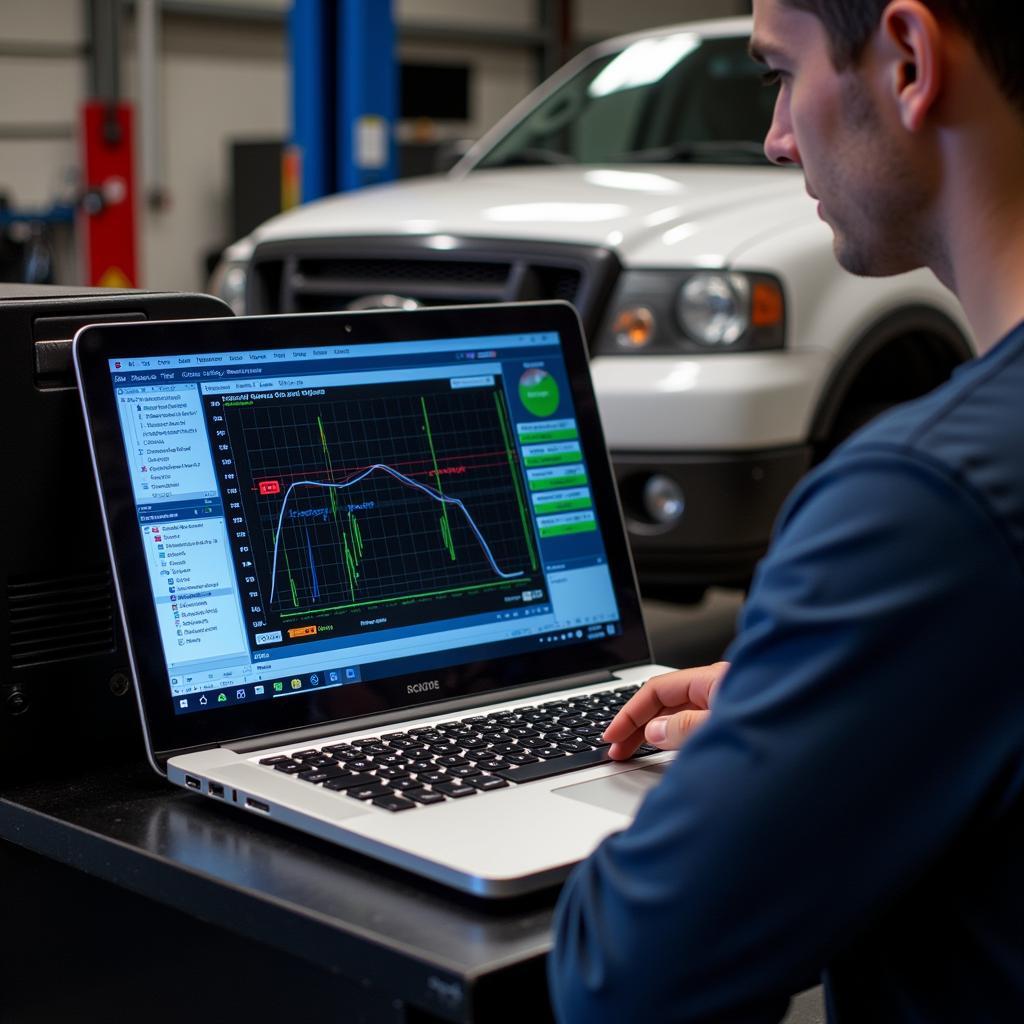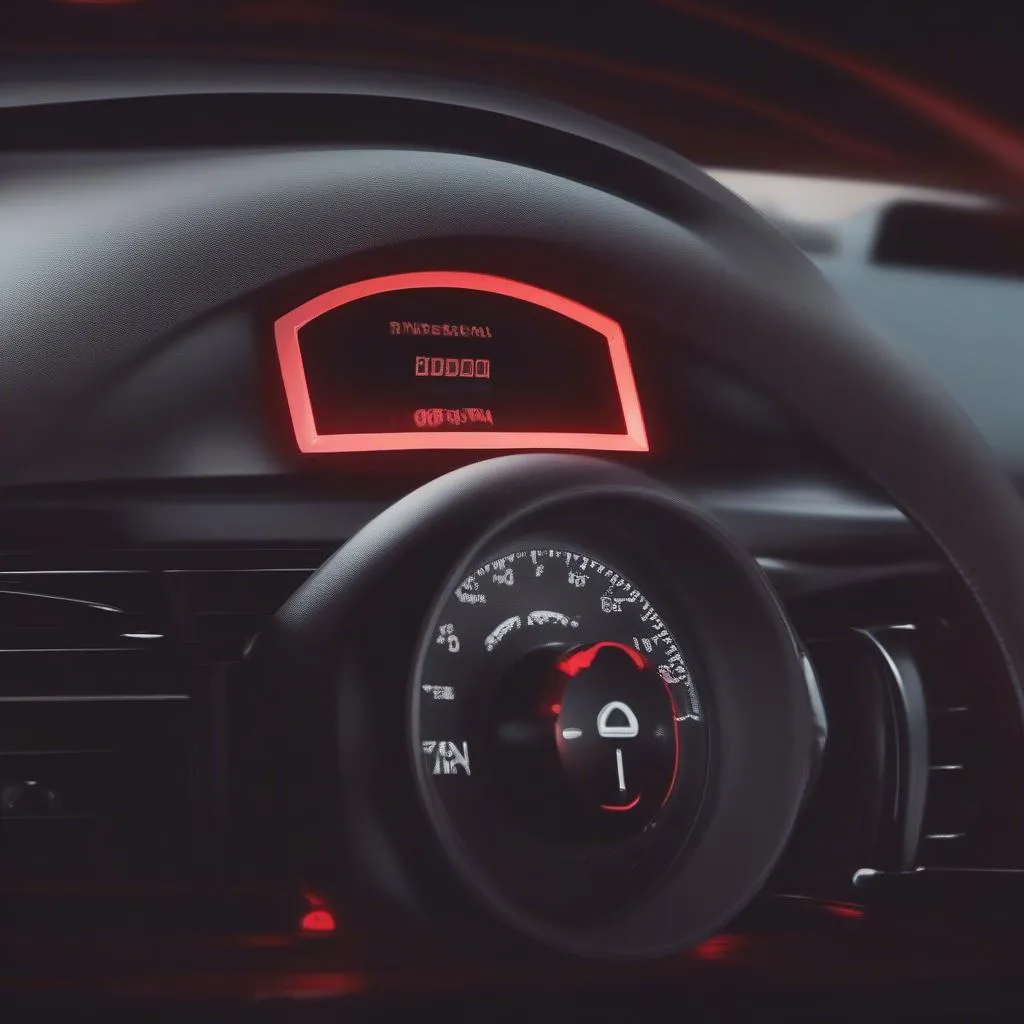You’re driving your trusty 2007 Ford F150 when you notice it – the dreaded brake warning light is on. A persistent brake warning light, especially in a pickup as reliable as the F150, can be a cause for concern. While it might seem like a minor annoyance, a glowing brake light often signals an underlying issue that needs immediate attention. This comprehensive guide delves into the common causes behind a stubborn brake warning light in a 2007 Ford F150 and provides you with practical solutions to get you back on the road safely.
 2007 Ford F150 dashboard with brake warning light illuminated
2007 Ford F150 dashboard with brake warning light illuminated
Common Culprits Behind a Lit Brake Warning Light
Before diving into solutions, it’s essential to understand why your brake warning light is so insistent. Here are the most frequent culprits:
-
Worn Brake Pads: Brake pads are your first line of defense when braking. Like any component exposed to friction, they wear down over time. The 2007 Ford F150 is designed with a sensor that triggers the warning light when your brake pads reach a critically low point, indicating it’s time for a replacement.
-
Low Brake Fluid: Your F150 relies on hydraulic pressure to engage the brakes. This pressure is generated using brake fluid. If the fluid level drops below a safe level, often due to a leak, the warning light will illuminate.
-
Faulty Brake Light Switch: Located behind your brake pedal, the brake light switch is responsible for activating your brake lights when you press the pedal. A malfunctioning switch can not only prevent your brake lights from functioning but also trigger the warning light on your dashboard.
-
ABS Issues: The Anti-lock Braking System (ABS) is crucial for safe braking, especially in slippery conditions. If the ABS module or any of its components encounter problems, it can trigger the warning light.
 Worn brake pads on a 2007 Ford F150
Worn brake pads on a 2007 Ford F150
Diagnosing the Problem
Now that you have a grasp of the potential causes, how do you pinpoint the exact issue in your 2007 Ford F150?
1. Check the Obvious: Brake Fluid
Start with a visual inspection of your brake fluid reservoir. Located under the hood, the reservoir is usually a translucent container with “DOT 3” or “DOT 4” marked on the cap. Ensure the fluid level is between the “Min” and “Max” lines. If it’s low, there’s likely a leak.
2. Inspect Your Brake Pads
Next, examine your brake pads. You can usually get a visual through the wheel spokes. If the pads are less than ¼ inch thick, they are due for replacement.
3. Listen for Unusual Sounds
When you apply the brakes, pay close attention to any unusual sounds. Grinding or squealing noises typically indicate worn brake pads, while a scraping sound might suggest a more severe issue.
4. Seek Professional Help
If a visual inspection and basic troubleshooting don’t reveal the culprit, it’s time to bring in the experts. A qualified mechanic can run diagnostics, pinpoint the issue, and provide the necessary repairs.
Remote Diagnostics and Software Solutions
In some cases, the problem behind a persistent brake warning light might stem from software glitches within your F150’s complex electronic systems. This is where remote diagnostics and software solutions come into play.
Modern vehicles are equipped with sophisticated onboard computers. These computers control various functions, including braking. Remote diagnostics allow technicians to connect to your vehicle wirelessly and run comprehensive scans to identify any software-related issues.
If the diagnostics uncover software problems, technicians can often resolve them remotely by installing software updates or reprogramming certain modules. This eliminates the need for a physical visit to the repair shop in many instances.
 Technician performing remote diagnostics on a 2007 Ford F150
Technician performing remote diagnostics on a 2007 Ford F150
Expert Insight: “Remote diagnostics and software solutions are becoming increasingly common in the automotive world,” says John Miller, a seasoned automotive electrician. “They offer a convenient and efficient way to address software-related issues that might be triggering warning lights.”
Addressing the Root Cause
Once you’ve identified the reason behind the stubborn brake warning light, it’s crucial to address the issue promptly.
-
Brake Pad Replacement: If your brake pads are worn, replacing them is non-negotiable. Always replace both pads on the same axle, even if only one appears worn.
-
Brake Fluid Leak Repair: Ignoring a brake fluid leak is incredibly risky. If you find your brake fluid is low, have a qualified mechanic inspect the brake lines, calipers, and other components to locate and repair the leak.
-
Brake Light Switch Replacement: Replacing a faulty brake light switch is relatively straightforward and inexpensive. You can often find tutorials online or consult your F150’s repair manual.
-
ABS Module Repair or Replacement: ABS issues can be complex. Depending on the specific problem, the ABS module might require repair or replacement by a professional.
Preventing Future Brake Light Woes
A proactive approach is key to avoiding future brake warning light headaches:
-
Regular Maintenance: Adhering to your F150’s recommended maintenance schedule, including brake inspections, is essential.
-
Quality Parts: When replacing brake components, opt for high-quality parts from reputable brands.
-
Attentive Driving: Be mindful of your braking habits. Avoid hard braking whenever possible.
-
Fluid Checks: Regularly check your brake fluid level, especially if you notice any changes in brake pedal feel.
Conclusion
A glowing brake warning light in your 2007 Ford F150 should never be ignored. Understanding the common causes and solutions empowers you to take timely action and keep your truck running safely and reliably. Remember, regular maintenance, prompt repairs, and attentiveness to your vehicle’s signals are the best ways to prevent future brake issues and ensure peace of mind on the road.


